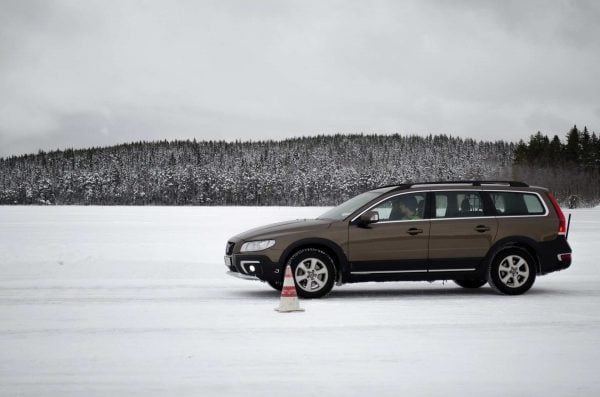The distance you should be able to see ahead relates to the amount of time you need to stop and how you can perceive the danger. This is affected by:
- Your eyesight
- Your speed
- The characteristics of the road ahead
- The weather
- The type of vehicle you are driving
Eyesight requirements
For class 1 (car) and class 6 (motorbike) licence holders, the minimum combined visual acuity is 6/12; both eyes must be better than 6/18. This generally means that you can read a number plate from 20 metres away.
For classes 2-5 (heavy vehicles), and P, V, I or O endorsements the minimum visual acuity is 6/9; both eyes must be better than 6/18.
This can be achieved with corrective lenses (glasses or contact lenses), but if they are required for driving then they must always be worn for driving. Rules for eyesight when driving are here.
While your eyesight will meet the requirements of your licence, there are still times when it will be compromised, for example, when wearing sunglasses or when squinting into a setting or rising sun.
Speed
Your speed directly affects your thinking distance and stopping distance which, combined, form your braking distance. For example, if it takes two seconds to react to a hazard while you are travelling 100km/h, you have travelled 55m before you’ve even moved your foot to the brake pedal. At 100km/h you will take another 3-4 seconds to stop on a dry road with ABS and you will travel at least another 50m meaning your total braking distance is over 100m.
This means that you will need to be able to see a minimum of 100m ahead of you to have any chance of stopping for a hazard. On single lane roads where the vehicle coming towards you also needs to be able to stop, you need to double this.
On snowy or wet roads, this will be longer.

If we take a conservative two-second reaction time and four seconds to stop, this means you need to see six seconds ahead of you at
This is an easier way to judge than thinking of distance because the distance will change dramatically depending on your speed. Time is much easier to calculate than distance – simply count one-thousand-and-one, two-thousand-and-two and so on. Each number represents one second. So, by the time you get to five-thousand-and-five, you’ve counted five seconds.
This also applies when you are following a vehicle. We use the mnemonic ‘only a fool breaks the two-second rule’ which means we stay two seconds behind a vehicle we’re following. If that vehicle was to stop immediately, you would barely have any time to react. However, its driver’s reaction time will be around two seconds after which it needs to
Of course, if you have anticipated what’s going on better than the driver ahead of you, you’ll already be applying the brakes while they are still thinking about it.
Road characteristics
The layout of the road and what is on it and around it affects how far you can see:
- Direction – left and right curves create a vanishing point
- Elevation – dips, bridges, humps, crests
- Vehicles – large vehicles ahead of you, vehicles parked on the side of the road – a good reason not to tailgate.
- Time of day – dusk and dawn, sun strike, night time (headlights provide much less detail than sunlight)
- Obstructions – trees and bushes, signs, traffic lights, fences, pedestrians
Weather
Lots of weather types and atmospheric conditions can reduce your visibility, from driving rain and fog through to heat hazes, smoke and dust.
Wet roads are more slippery than dry roads and icy roads are more slippery than wet roads.
Vehicle type
Many factors affect how good your vehicle is at stopping. That includes whether it’s laden or empty, whether it has anti-lock brakes, how worn the tyres are and how good the shock absorbers are. If you are towing a trailer, if the trailer has trailer brakes it will affect the stopping distance much less than if it has no brakes. If you double the weight of your vehicle (e.g. if you are towing another car) it can take up to four times longer to stop!

